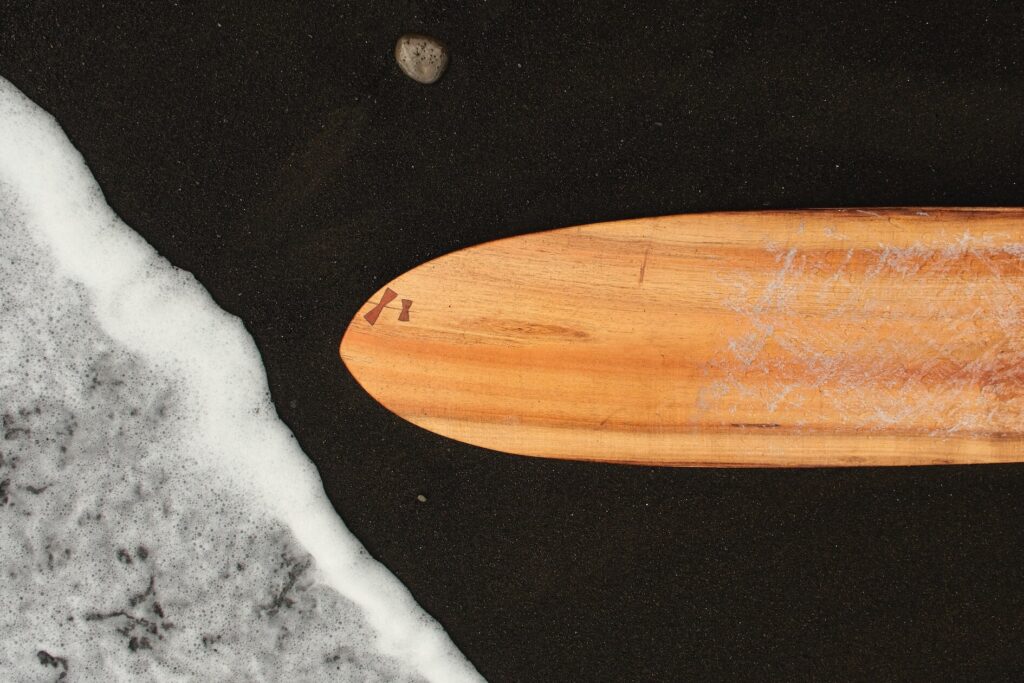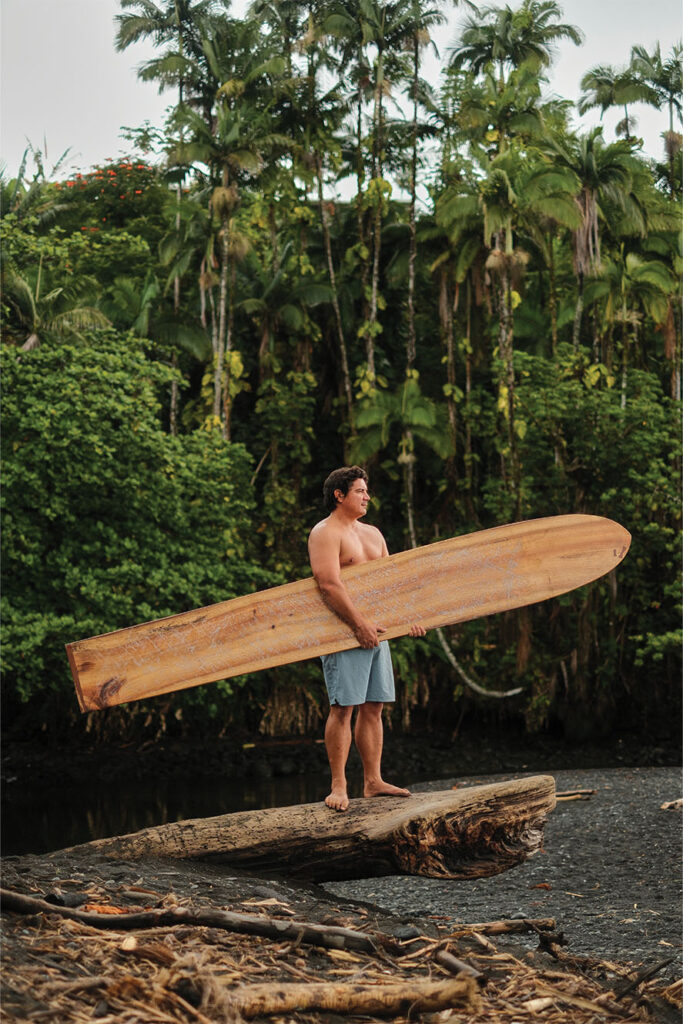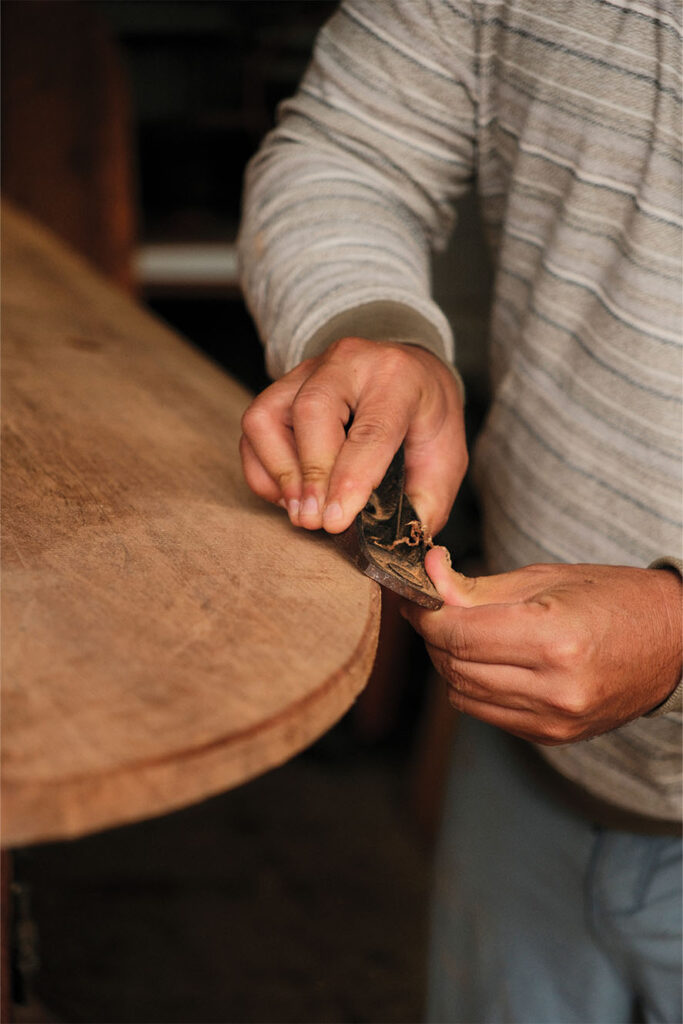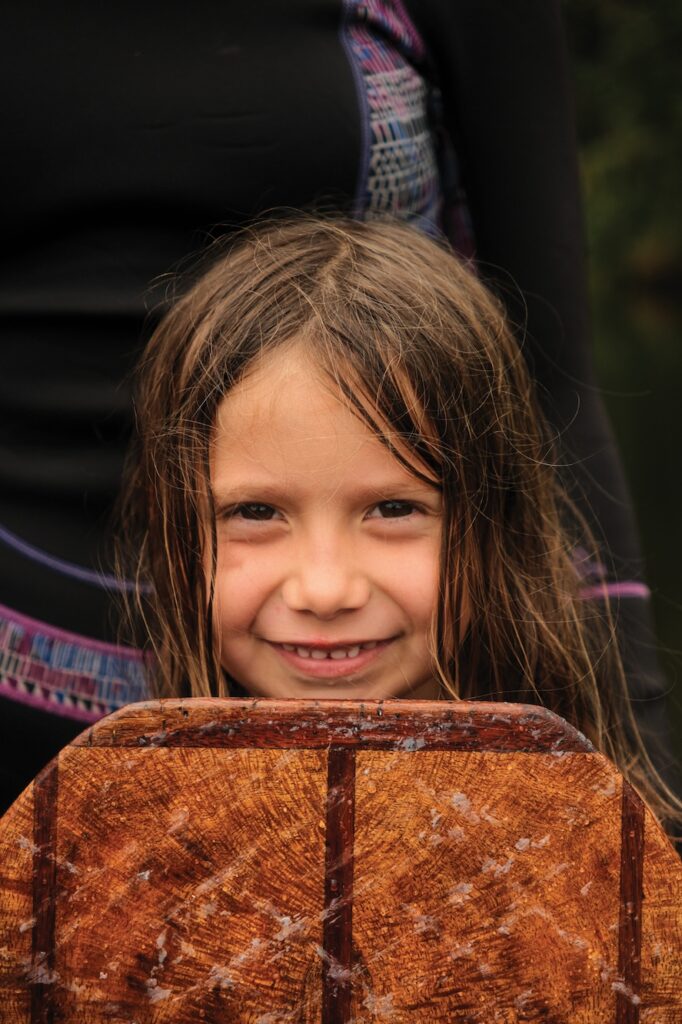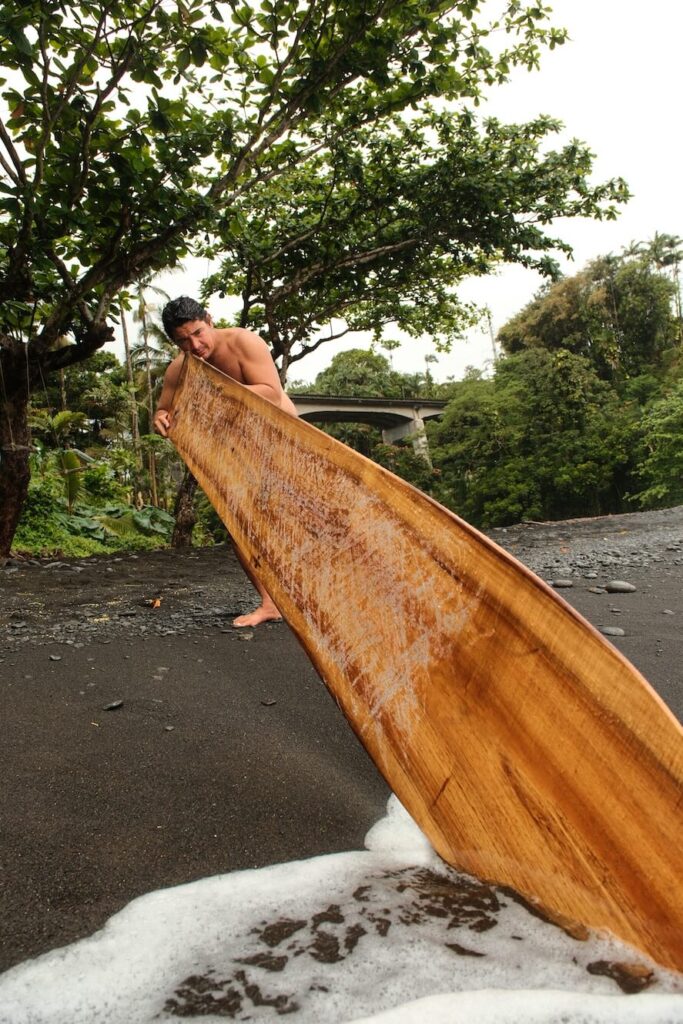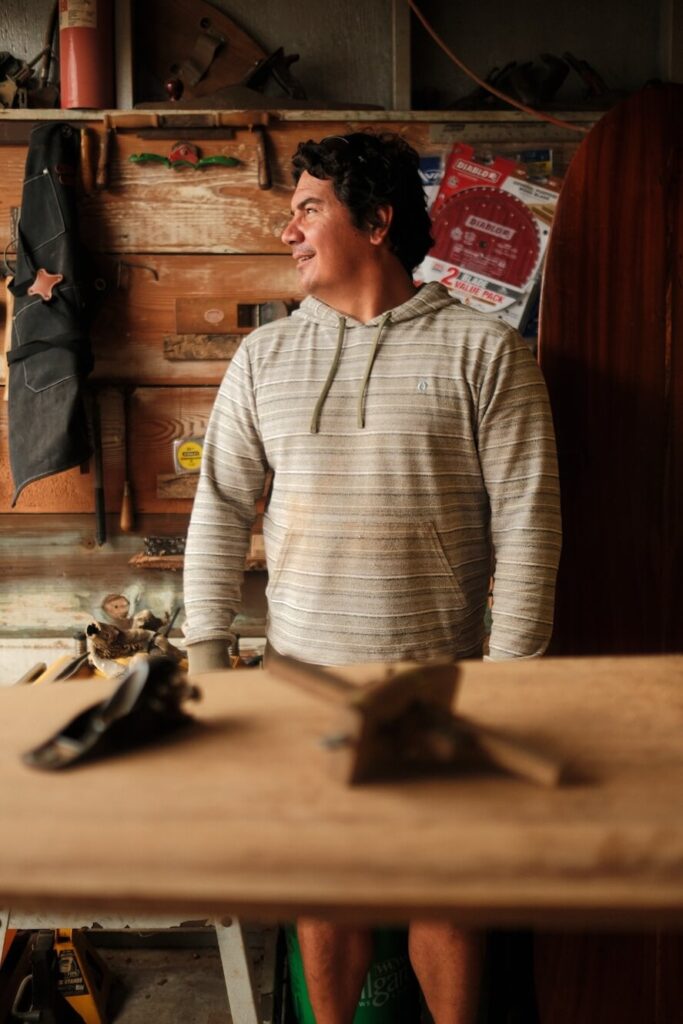From the instant Brandan Ahuna first saw a wooden surfboard while working as a professional lifeguard, he was hooked. “I took off on my first wave and stood up on it, rode it all the way. The board rode as good as it looked. It was unbelievable.”

Ripping that single wave connected Ahuna to his own culture in a way even a kid raised on a Hawai‘i homestead found exhilarating and ancient. “I just said to myself, look here, I am a Native Hawaiian riding this traditional Hawaiian surfboard, I feel like I should be able to make this myself.”
Today Ahuna is among a handful of native alaia surfboard shapers, reviving a lost skill, and linking indigenous craft to ocean sustainability.

Wood-on-Water Connection
After that first ride, Ahuna began making wood boards for friends, studying how pre-contact Hawaiians shaped theirs with visits to the Bishop Museum in Honolulu. He has been modernizing, tweaking and improving designs ever since. Now a bespoke board maker, he matches the wood and the length to the style of the rider and the size of their waves.

Not only different, but healthier for the shaper and the sea. Modern boards are a mix of fiberglass and foam, a collection of noxious chemicals, where Ahuna uses salvaged local wood, driftwood and recycled hardwoods. Hawai’i’s endemic trees are protected, so he partners with local sawyers and contractors to source wood that has fallen naturally or can be repurposed.

Bespoke Boards
“All my boards are functional pieces of art,” Ahuna says over lunch at Mauna Lani, Auberge Resorts Collection on the Big Island of Hawai‘i. Classic wooden surfboards, known as alaia, were ridden for hundreds of years before Europeans arrived on Hawai‘i’s shores. While the boards are beautiful, with delicate inlays and a grain that seems to glow from inside the plank, Ahuna’s aren’t just wall-hangers, his boards are meant to be surfed.

Alaia surfing had all but disappeared until the Hawaiian cultural renaissance met up with 21st-century surfers. On first glance, Ahuna’s boards look more like snowboards or a skateboard deck—they are flat, short, and only an inch thin—and crucially, they lack bottom fins and so don’t grip the water the way a modern board will, they don’t have the same control or lift. Ahuna’s boards are celebrated for sliding down a wave’s face with what Hawaiians call lala, literally, on the diagonal. That is, they are unpredictable, fun, an adventure.
It takes about two weeks to complete each board, Ahuna says, he remains a Big Island lifeguard by profession. Where ancient Hawaiians used stone tools, water and natural resin to fashion boards, Ahuna’s workshop is his garage and looks like any modern woodworker’s, with bandsaws, planes and sanders. His three daughters, ages 17, 11 and 6, will pitch in to help on breaks and weekends, “when they’re stuck at home with dad.”
Today, Ahuna enjoys teaching local kids and his own children about traditional surfboards and can imagine himself passing on board-shaping skills to future generations of Hawai‘i’s grinders. These sustainable and historic boards have become Ahuna’s kuleana, his ancestral obligation.

